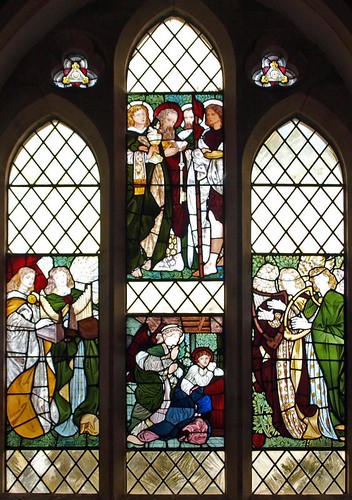St Mary may or may no be Essex's smallest complete church but it has been thoroughly Victorianised and is internally mediocre except for an Early Burne-Jones east window; the exterior is OK but not earth shattering.
St Mary Magdalene should, on paper, be dire but actually I rather liked it. A pity then that it's locked with no keyholder listed even though I suspect internally it would be a let down
Developed as a seaside resort by Sir Richard P. Cooker about 1890-1900. Of Frinton village the only relic is the old village church.
OLD ST MARY. Nave with chancel of 1879 and bellcote. S porch brick, plain, early c16. — STAINED GLASS. In the E window four panels of Morris glass, designed by Burne-Jones and obviously still in the early style of the firm, before the peacock blues and greens began to dominate colour schemes. The window is said to come from Melchet Abbey, but was bought at a London sale by the donor to the church.
NEW ST MARY, Old Road. 1928-9 by Sir Charles Nicholson. Perp exterior, without tower. Flint and bands of brick. The aisle flat-roofed and embattled. Bellcote over the porch, W of the S aisle. Inside not at all Perp. Italian cruciform piers with round arches, a Renaissance effect. Prettily painted ceilings, as usual in Nicholson’s churches.
FRINTON-ON-SEA. We have read that here come the man who would forget his fame and the woman who is tired of the public’s admiration. We do not know, but certainly here come thousands who love the cliffs and the sea. With roads laid out like a garden city and an open space known as the Greensward extending for a mile between the sea-road and the cliffs sloping gently to the beach, it is an attractive place. Its church has grown from one of the 14th century, with a brick porch added in the 16th, but it has few things of ancient days, though one of the chancel windows has two shields of 14th century glass. Here there was laid, from these splendid sands, the first telephone cable to a lighthouse at sea, first used on October 2, 1893.


No comments:
Post a Comment